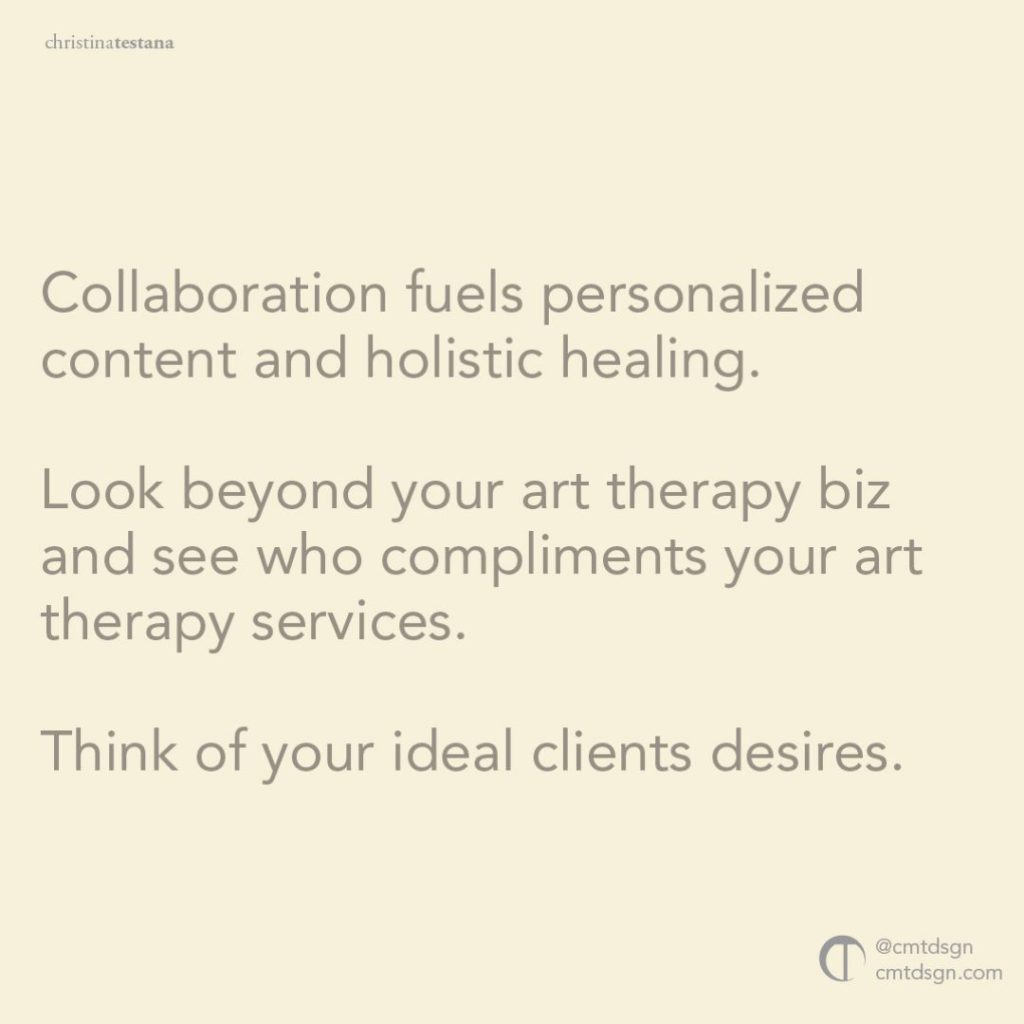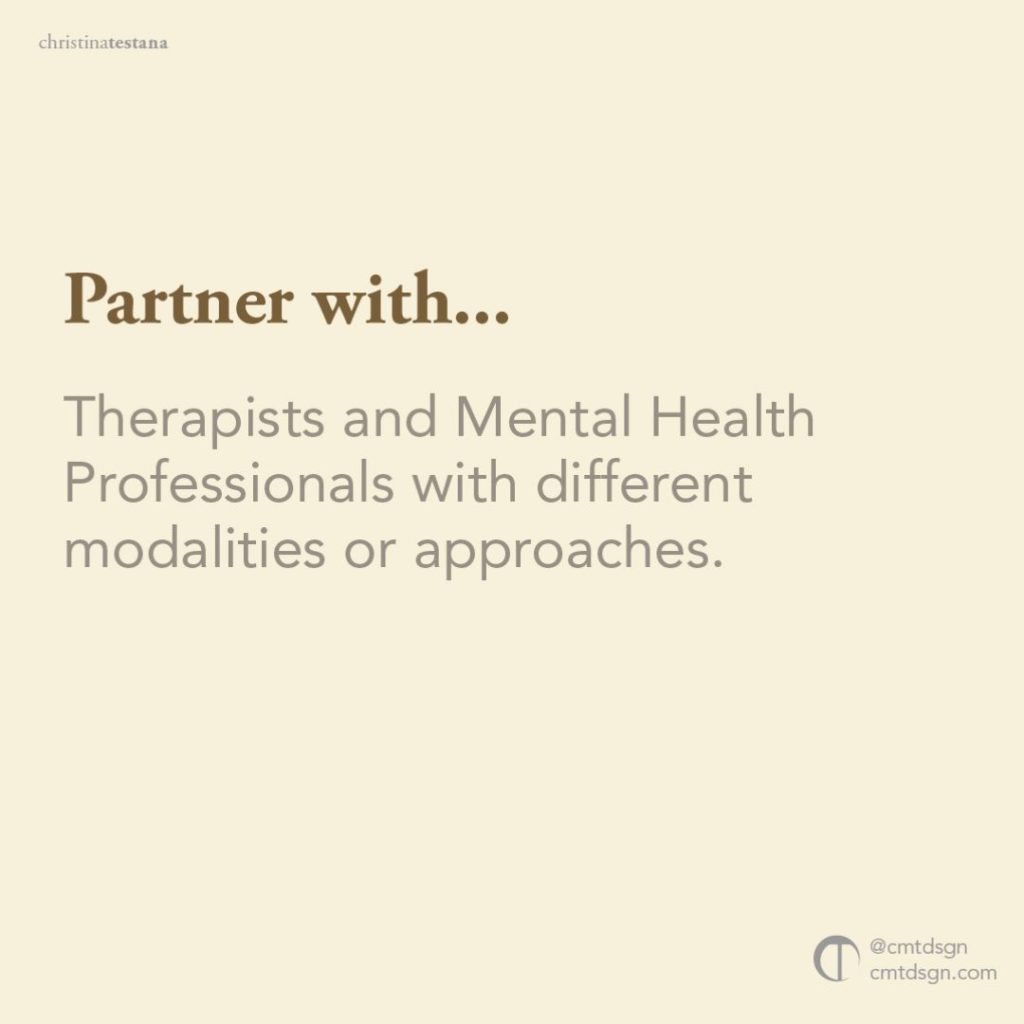
Unlocking the transformative power of your art therapy brand requires more than just creativity—it demands a deep understanding of the unique languages of your ideal client and tailoring communication.
Imagine the immense impact when your therapeutic tailoring communication resonates effortlessly with those you guide towards healing.
How can you bridge the gap and craft connections that go beyond and align with your ideal client’s world?
In this exploration, I’ll dive into the art of adapting client-centered communication to diverse art therapy audiences, revealing techniques that kindle connections that ignite change.
Tailoring Communication to Diverse Art Therapy Audiences
When building your art therapy brand you need to consider designing around a specific ideal client. This is about designing to their needs and bridge two worlds together. You have to identify the type of person they are, their preferences to learning and the current needs and desires. Alongside understanding your ideal client, I want you to step out of your bubble. Look beyond what you do. How can you serve your ideal client better? Let’s find out!
Identifying Varied Audience Groups
Don’t put all your eggs in one basket. Within establishing and building an art therapy brand you shouldn’t be alone on this journey. Brainstorm some possible partnerships, alliances and collaborations are great ways to create even more personalized content, services, events for holistic healing to your ideal client.
You want to look at all the avenues for opportunities and not think of other therapists or healthcare professionals as competitors. The major key is to find partnerships that align with the goals and values of your art therapy business and contribute to positive outcomes for your ideal client.
Here are some people to potentially collaboration with:
- Nutritionist
- Fitness coach
- Career coach
- Play coach
- Life coach
- Business coach
- Dream-analyst
- Psychiatrist
- Psychologist
- Counselor
- Social Worker
- Marriage and Family Therapist
- Music Therapist
- Dance/Movement Therapist
- Occupational Therapist (with mental health specialization)
- Clinical Nurse Specialist (in mental health)
- Psychiatric Nurse Practitioner
- Mental Health Nurse
- Psychotherapist
- Hypnotherapist
- Play Therapist
- Behavioral Therapist
- Cognitive Behavioral Therapist
- Psychoanalyst
- Neuropsychologist
- Addiction Counselor
- Child and Adolescent Therapist
- Geriatric Therapist
- Trauma Therapist
- LGBTQ+ Therapist
- Sex Therapist
- School Counselor
- Grief Counselor
- Clinical Hypnotherapist
- Holistic Therapist
- Eating Disorder Specialist
- Forensic Psychologist
- Massage Therapists
- Yoga instuctor
- Industrial-Organizational Psychologist (in the field of workplace mental health)
- Schools and Educational Institutions
- Hospitals and Healthcare Facilities
- Nonprofit Organizations
- Art Galleries and Studios
- Community Centers
- Art Supply Companies
- Universities and Research Institutions
- Advocacy Groups
- Support Groups
- Corporate Wellness Programs
- Parenting Organizations
- Veterans’ Organizations
- Cultural and Community Leaders
- Art Educators
- ADHD Coach
- Lifestylist
- Interior Designer
- Brand Designer
- Stylist
As an art therapy brand you aren’t only working with clients you could be working with other brands, forming collaborations and sponsorships.
Here is a list of possible sponsorships that you can establish:
- Art Supply Companies: Partnering with art supply companies can provide art therapists with discounted or free art materials. This not only helps art therapists save on expenses but also allows them to offer better-quality materials to their clients, enhancing the overall therapeutic experience.
- Art Galleries and Studios: Collaborating with art galleries or studios can provide exposure for both the therapist and their clients. Art therapists could showcase their work or facilitate collaborative exhibitions, providing clients with opportunities to display their artistic expressions and gain recognition.
- Mental Health Organizations: Teaming up with mental health organizations can help art therapists contribute to mental health awareness campaigns and programs. This collaboration can raise the profile of both the therapist and the organization while promoting the benefits of art therapy.
- Healthcare Facilities: Partnering with hospitals, clinics, or healthcare centers can enable art therapists to provide their services to patients who can benefit from art therapy as a complementary treatment. This collaboration can lead to referrals and increased exposure to potential clients.
- Nonprofits: Collaborating with nonprofits focused on arts, mental health, or community development can provide opportunities for art therapists to work on impactful projects and initiatives. This exposure can attract clients who resonate with the therapist’s philanthropic efforts.
- Art Journals and Publications: Partnering with art therapy-related journals or publications can help art therapists share their expertise and research with a broader audience. This exposure can position the therapist as an industry thought leader, attracting clients seeking specialized knowledge.
- Art Exhibitions and Events: Sponsoring art therapists to participate in art exhibitions or events can showcase their artistic talents and enhance their professional visibility. This exposure can lead to connections with potential clients who attend these events.
- Art Therapy Associations: Partnering with art therapy associations can support their advocacy efforts, conferences, and member resources. This collaboration can position the therapist as an engaged member of the art therapy community, attracting clients who value industry involvement.

The Power of Adapted Communication
Anything you do in your brand needs to adapt to the ideal client because they are the ones you serve and your focus is to meet the needs. Everything I mentioned above will help you in the following areas.
Establishing Trust and Connection
The more you focus on building partnerships and collaborations the higher your trust meter becomes. When you begin to talk and connect with more and more people, exposing yourself to more events and creating amazing content together, it builds immense amount of creditability. This backs you up and alongside with your collaborators to put in a good word for you. Given that you and the collaborator are working together and growing your audience; building strong connections.

Enhancing Therapeutic Outcomes
With this power of collaboration, alliances, partnerships and sponsorships. Your communication goes beyond the clients needs and reaching more of their aspirations and desires that maybe they couldn’t reach alone. This establishes harmony within themselves, the professionals and over all community. It actively contributes to achieving meaningful therapeutic outcomes.
This leads to:
Increased Engagement
When art therapists communicate in a way that resonates with the client’s preferred communication style and meet their needs and desires, it increases the client’s engagement in the therapeutic process. This engagement is crucial for the effectiveness of art therapy interventions.

Tailored Techniques
By understanding your ideal client’s unique communication preferences, art therapists can tailor their therapeutic techniques. This personalization ensures that interventions are effective and resonate with the client’s needs or can be redirected to other collaborators in connection.

Positive Feedback Loop
When clients perceive that their thoughts and emotions are understood, they are more likely to provide feedback and collaborate in their therapeutic journey. This positive feedback loop contributes to ongoing progress.
Strategies for Effective Communication

Effective Client-Centered Approach
Adopting an effective client-centered approach in your art therapy brand involves two essential components: studying clients’ backgrounds and needs, and creating a nurturing environment.
Understanding a client’s background—personal experiences, cultural influences, and challenges—is key to tailoring communication.
By acknowledging their unique history, art therapists can ensure that their messages resonate deeply and craft amazing offers and opportunities that demonstrate genuine empathy.
Furthermore, establishing a nurturing environment cultivates a space where clients feel safe willing to open up. Communicating with warmth, empathy, and non-judgmental listening encourages clients to open up about their emotions and thoughts, which ultimately fuels the therapeutic process and your overall brand.
Collaboration Among Therapists
Don’t be afraid the collaborate, with other therapists. I know some of you might be a little timid or resistant to try. But, did you know that people are quite fascinated when two people come together to create? It can be a webinar or a offer either way they always enjoy the chemistry between two people. Collaborations are a powerful tactic for growth and innovation. By sharing insights, techniques, and experiences, therapists enhance their collective expertise.
This exchange of knowledge encourages a dynamic exploration of diverse therapeutic approaches and strategies. Collaborative learning builds an environment where art therapists can refine their skills, broaden their perspectives, and gain new insights into tailored communication. This sharing of expertise doesn’t just benefit the therapists involved—it translates into enriched client experiences as therapists bring new ideas and techniques to their individual practices, creating a ripple effect of positive impact within the art therapy community.

Bridging with Healthcare Professionals
In the ever-evolving landscape of mental health care, collaborative projects and interdisciplinary approaches have emerged as a huge phenomenon in this era.
This brings together professionals from diverse fields to provide holistic and comprehensive care to individuals facing mental health challenges. By combining the expertise of psychologists, counselors, social workers, medical professionals, and even creative therapists such as art therapists, these approaches create an alliance that goes beyond traditional expectations.
Collaborative projects harness the power of collective knowledge and insights, enabling professionals to craft tailored interventions that address the multifaceted nature of mental well-being. Through shared expertise, open communication, and a common goal of enhancing lives, interdisciplinary collaborations stand as a light of hope, promising innovative and effective solutions to the complexity of mental health care.
Art therapists have a unique role in bridging the gap between creative expression and healthcare.
Collaborating with healthcare professionals—such as doctors, nurses, and psychologists—creates a holistic approach to patient care. By coordinating efforts, healthcare professionals can gain insights into the emotional and mental well-being of their patients through art therapy.
This collaboration strengthens therapeutic support as professionals work in collectively to address patients’ physical and emotional needs. Through effective communication and shared insights, art therapists contribute to comprehensive treatment plans that cater to the whole person, resulting in more comprehensive and successful therapeutic outcomes.
Adapting Techniques for Different Audiences
Being adaptable to change and switching tactics is essential in your art therapy brand. It’s key to identify that specific person you want to help and their specific problems. If you were to step out of your bubble and hop into another art therapy brand you will see how different their audience is. They use different language, imagery and are addressing another issue compare to yours. You will see how vital to know the following points when you build out your brand and ideal client.
Addressing Specific Issues
Art therapists play a pivotal role in addressing specific mental health issues such as trauma, anxiety, and depression through compassionate and tailored approaches.
Recognizing that these challenges manifest uniquely in each individual, art therapists adapt their tailored communication strategies to create a safe and understanding space.
By combining empathy with specialized techniques, they guide clients to express and process their emotions through artistic avenues.
This approach builds healing and growth, allowing clients to navigate their emotional landscapes with a sense of empowerment.
Age-Appropriate Communication
In the realm of building an art therapy brand, effective communication takes on different dimensions when working with specific age groups: children, teenagers, and adults. They each have different languages and techniques.
To suit the developmental stage and cognitive capacity of the demographic you choose, it’s important to tailor your brand voice and messaging to either very simple form if you are focusing on kids or the average human knowledge if working with adults. Engaging children involves playing with creative methods that tap into their imaginative worlds for educating, while adolescents benefit from messaging that respect their autonomy and identity.
For adults, art therapists provide a platform for introspection and expression that aligns with their life experiences. This tailored approach in your brand ensures that art therapy resonates deeply with each age group, maximizing its messaging and therapeutic impact.
Harnessing Visual Tools
Visual adaptations in branding stand as powerful allies in expressing art therapy and should be used when sharing your brand message, going beyond verbal limitations and enhancing communication through other forms.
Art therapists must leverage visual aids to simplify complex concept of art therapy and show how it can relieve emotions and thoughts, providing clients with a tangible platform for self-expression.
These tools become especially invaluable in overcoming verbal communication challenges, enabling clients to being open to the world of art therapy when words fall short.
Measuring and Elevating Communication Success
As an art therapy brand you need to check in with your audience in terms of how they’ve been enjoying the work you been doing, and the content you’ve been creating. This is about alignment check-in and if anything needs to pivot or if communication needs to shift.
Gathering Valuable Feedback
Measuring the success of adapted communication in your art therapy brand involves a proactive approach to gathering valuable feedback. Art therapists navigate their target audience by assessing the impact of their tailored strategies.
This multifaceted evaluation allows therapists to refine their approaches and ensure they resonate effectively. Moreover, embracing strategies for ongoing improvement is a hallmark of responsive art therapy. By soliciting feedback and staying attuned to evolving needs, therapists nurture a continuous cycle of growth that keeps their tailored communication methods dynamic and aligned with the ever-changing landscape of therapeutic interactions.
In Conclusion…
In the realm of art therapy, the journey of adapting communication to diverse audiences is a path filled with transformative potential. As you step into the world of your ideal clients and embrace partnerships, collaborations, and tailored approaches, you are not only building a brand but also nurturing a connection that bridges understanding, trust, and healing.
The symphony of collaboration among therapists, the resonance of age-appropriate communication, and the power of harnessing visual tools all contribute to a tapestry of holistic well-being. By measuring and elevating tailored communication success through feedback and ongoing improvement, you ensure that your art therapy brand evolves in sync with the changing needs of your clients.
Through the language of creativity, you speak to the hearts and souls of those seeking healing, growth, and transformation. Your brand becomes a light of hope, guiding individuals on a journey toward self-discovery and empowerment. As you adapt, collaborate, and tailor your messages, you weave a narrative that surpasses boundaries and resonates deeply with the diverse tapestry of human experience. By speaking your ideal clients’ language, you create a space where connections flourish, trust is nurtured, and the therapeutic power of art unfolds.
